#Tolypeutes
Text
Fun fact: #DYK of the 21 living species of Armadillos (Order Cingulata), only the Three-Banded Armadillos (Tolypeutes genus, 2 species) can roll up into a ball like this.

Graham Sutherland (British, 1903-1980)
Armadillo, 1968
Lithograph from the Bestiary series
6.59 x 5.00 cm
Christchurch Art Gallery Te Puna o Waiwhetū
#armadillo#Cingulata#Three-banded Armadillo#Tolypeutes#zoology#mammalogy#DYK#lithograph#print#works on paper#20th century art#British art#European art#Graham Sutherland#Christchurch Art Gallery Te Puna o Waiwhetū#animals in art
116 notes
·
View notes
Photo

Southern Three-Banded Armadillo (Tolypeutes matacus)
by Josh More
#southern three banded armadillo#Tolypeutes matacus#Tolypeutes#Chlamyphoridae#Cingulata#mammalia#chordata#captive animal#minnesota zoo#armadillos
42 notes
·
View notes
Text
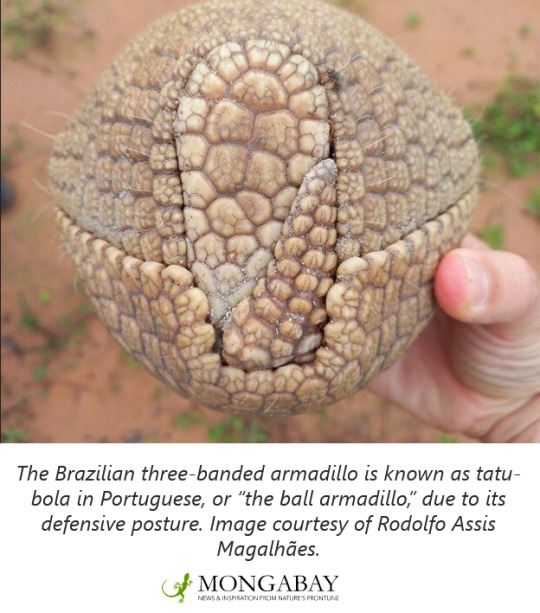


The Brazilian three-banded armadillo (Tolypeutes tricinctus), endemic to the semiarid dry forests of northeastern Brazil, is listed as vulnerable by the [...] (IUCN) [...]. A new initiative to study the Brazilian three-banded armadillo has begun in the Chapada Diamantina region in the state of Bahia, aiming to estimate the species’ population trends through long-term monitoring and citizen science in the village of Sumidouro. [...] Endemic to Brazil, the Brazilian three-banded armadillo is a species native to the Caatinga, a semiarid dry forest ecosystem in the country’s northeast, but it can also be found in the savannas of the Cerrado. Feeding on termites and ants, the armadillo has an excellent sense of smell as it teeters on its enormous claws, combing the landscape in search of its prey. In Portuguese, the species is known as the tatu-bola, or the “ball armadillo” — as it rolls itself into a complete ball when threatened, a defense that bewilders and discourages smaller predators. Its shell, though, offers no protection against its [...] predator, the jaguar, or against humans. [...] Land degradation in the Caatinga [...] has reduced the armadillo’s habitat by about half of its original forest cover. [...] For most of the latter half of the 20th century, many in the scientific community believed the Brazilian three-banded armadillo had already been hunted to extinction. However, its unexpected rediscovery in the late 1980s proved the species had been able to persist in low densities against the odds. [...] The armadillo has become a symbol of local pride in Sumidouro.
---
Headline, images, captions, and text published by: James Hall. “Brazilian 3-banded armadillo benefits from community conservation in Bahia.” Mongabay. 13 March 2023.
77 notes
·
View notes
Text

O tatu bola (Tolypeutes tricinctus) é nativo ao Brasil, ou seja, é restrito em determinada região geográfica, ele vive principalmente na caatinga e em algumas regiões do cerrado conforme ilustrado na figura 02. É um animal que sofre por diversas ameaças como à caça, destruição do seu habitat, queimadas e entre outros.
Contudo, esse animal inclui-se na lista oficial das espécies da fauna brasileira ameaçadas de extinção, apontada como em risco e também citada na Lista Vermelha da União Internacional para Conservação da Natureza – IUCN, sendo descrita como desprotegida.
Conforme o ICMBio (2014), o Tolypeutes tricinctus apresenta três cintas móveis na região média do dorso, fazendo com que o animal consiga curvar sua carapaça para ficar com a aparência de uma bola, de onde vem seu nome mais conhecido.
Segundo o ICMBio (2014, p. 3) “O peso destas espécies pode variar entre 1,0 e 1,8 kg e o comprimento total varia de 40 a 43 cm”. Sua cauda possui escudos dérmicos que se curvam com facilidade e sua alimentação é composta por cupins, alguns insetos invertebrados e frutos. Estas espécies são geralmente noturnas, mas também podem ser observadas durante o dia.
Ainda conforme a ICMBio (2014) esses animais abrigam-se habitualmente em tocas feitas e abandonadas por outros animais e também se escondem embaixo de folhas secas. Em relação a sua reprodução vários machos se acasalam com a mesma fêmea e o seu tempo de gestação dura em torno de aproximadamente 120 dias, geralmente acontece o nascimento de um filhote, mas pode haver casos de ter dois.
Para mais informações acesse: https://www.iucnredlist.org/species/21975/47443455#taxonomy

0 notes
Photo

When you reach your socializing limit for the week
2 notes
·
View notes
Text

Grzimek's Animal Life Encyclopedia, vol. 11, Mammals II. Illustration by Edward Bierly. 1972.
1.) Nine-banded armadillo (Dasypus novemcinctus)
2.) Brazilian three-banded armadillo (Tolypeutes tricinctus)
3.) Giant armadillo (Priodontes maximus)
4.) Southern naked-tailed armadillo (Cabassous unicinctus)
5.) Dwarf armadillo (Zaedyus pichiy)
6.) Large hairy armadillo (Chaetophractus villosus)
7.) Six-banded armadillo (Euphractus sexcinctus)
8.) Pink fairy armadillo (Chlamyphorus truncatus)
9.) Greater fairy armadillo (Calyptophractus retusus)
#xenarthra#armadillos#nine banded armadillos#brazillian three banded armadillos#giant armadillos#southern naked-tailed armadillo#dwarf armadillos#large hairy armadillos#six banded armadillos#pink fairy armadillos#greater fairy armadillos#Edward Bierly
314 notes
·
View notes
Text
FAUNA~ CAATINGA

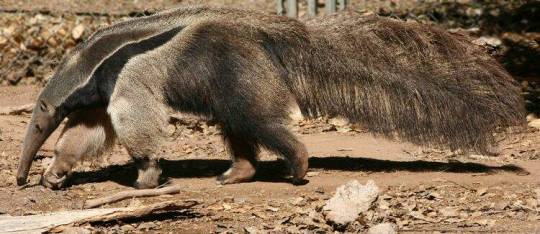
Assim como as plantas, os animais sofreram adaptações para superar a estiagem. Adaptaram-se para consumir alimentos disponíveis na estação, realizam migrações sazonais para locais mais úmidos como as serras, aceleram o ciclo reprodutivo durante as chuvas ou entram em estado de dormência durante a seca.
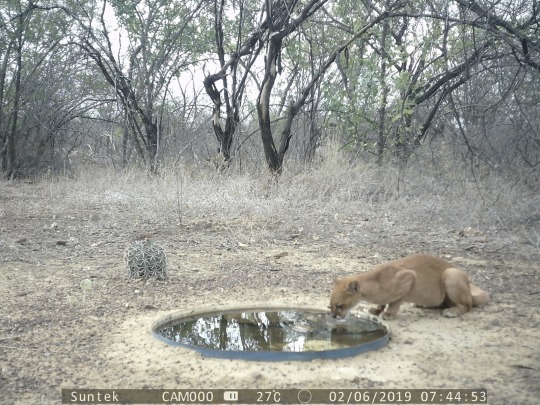
Peixes
Um dos mais surpreendentes grupos de animais da Caatinga são os peixes, com 240 espécies, das quais a estimativa é que 136 sejam endêmicas. Das espécies identificadas, 25 conseguem adiar a postura dos ovos para o período chuvoso. Os ovos são resistentes e o desenvolvimento do embrião é lento, podendo durar quase um ano. Ao eclodirem, os peixes – que atingem cerca de 5 a 15 cm de comprimento – vivem em lagoas e poças de águas temporárias.
Anfíbios
Ao todo são 49 espécies conhecidas, dessas, cerca de 15% são endêmicas. Parece surpreendente que os anfíbios existam na Caatinga, já que necessitam manter a pele sempre úmida e dependem da água para reprodução e desenvolvimento. Eles desenvolveram uma estratégia como longos períodos de estivação (um tipo de “dormência”) no período seco, reprodução apenas no período chuvoso, proteção dos ovos e girinos em ninhos de espuma para não dessecarem e acelerada metamorfose dos girinos para vencer a evaporação da água.
Répteis
Na Caatinga são cerca de 116 espécies, sendo 10 de anfisbenídeos (lagarto sem pata) e 47 lagartos, 52 serpentes, 4 quelônios e 3 crocodilianos. Como exemplo temos o Jacaré-coroa (Paleoschus palpebrosus), Iguana (Iguana iguana) e a Caninana (Spilotes pullatus).
Aves
São 510 espécies de aves registradas na Caatinga, sendo cerca de 1/3 dessas endêmicas. Como por exemplo, o Corrupião (Icterus jamaraii), Galo-de-campina (Paroaria dominicana), Asa-branca (Columba picazuro), Periquito-do-sertão (Eupsittula cactorum), Canário-da-terra (Sicalis flaveola) e o Cancão (Cyanocorax cyanopogon)
Mamíferos
A fauna de mamíferos do bioma Caatinga possui 148 espécies registradas, sendo 10 endêmicas. A perda de habitat e a caça são os principais fatores de perigo para essas espécies e dez delas estão incluídas da lista oficial de espécies ameaçadas de extinção. Como exemplo temos a Onça-parda (Puma concolor), Jaguatirica (Leopardus pardalis), Gato-mourisco (Puma yagouaroundi), Tamanduá-mirim (Tamandua tetradactyla), Soim (Callithrix jacchus), Raposa (Cerdocyon thous), Mocó (Kerodon rupestris), Tatu-bola (Tolypeutes tricinctus), Catitu (Pecari tajacu) e Veado-catingueiro (Mazama gouazoubira).

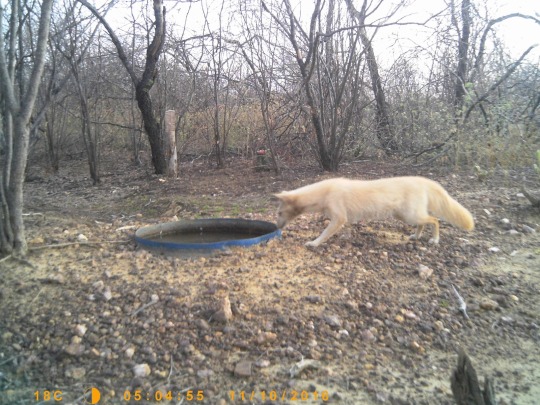

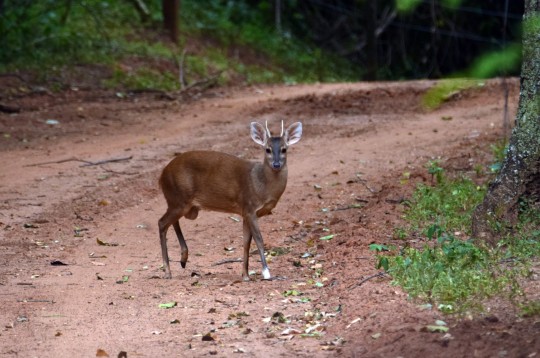
1 note
·
View note
Photo

[Yes, they can! Three-banded armadillos Tolypeutes sp. (Cingulata: Dasypodidae) dig their own burrows]
Attias et al. (2016)
87 notes
·
View notes
Text

Yep you've all been duped.
Its seems that only the Tolypeutes genus has the ability to curl into a spherical ball.
This is cause they have fewer protective plates to curl.
14/10/20
#vulture culture uk#vulture culture#oddities#taxidermy#bones#skull#skull collecting#animal skull#curiosities
3 notes
·
View notes
Photo


Inktober 14: Armour(dillo)
A southern three-banded armadillo (Tolypeutes matacus)
2 notes
·
View notes
Photo

Armadillo (Tolypeutes tricinctus) protegido por su coraza.
8 notes
·
View notes
Photo

Novo artigo do Blog Ipitanga http://ipitanga.com.br/pf-investiga-pagamento-de-propina-nas-obras-da-linha-4-do-metro-do-rio/
PF investiga pagamento de propina nas obras da Linha 4 do Metrô do Rio
A Polícia Federal deflagrou hoje (14/3) a Operação Tolypeutes*, com o objetivo de desarticular um grupo criminoso responsável por cobrar propina e por lavagem de dinheiro em contratos de obras civis no estado do Rio de Janeiro, em especial na construção da Linha 4 do Metrô. A Operação, nova fase da Lava Jato no Rio de Janeiro, é realizada em conjunto com o Ministério Público Federal e a Receita Federal.
Aproximadamente 40 policiais federais cumprem 2 mandados de prisão preventiva, 13 mandados de busca e apreensão e 3 mandados de condução coercitiva, expedidos pela 7ª Vara Federal Criminal/RJ, na capital fluminense e no município de Sapucaia/RJ.
As investigações, iniciadas há 4 meses, apontam a participação de um ex-subsecretário de Transportes do Governo do Rio e de um diretor da Companhia de Transporte sobre Trilhos do RJ (Riotrilhos) no grupo criminoso. Os envolvidos procuravam as empreiteiras interessadas em assumir obras de infraestrutura no estado, cobrando vantagens indevidas com o objetivo de garantir a contratação para os serviços. A propina era paga, de forma dissimulada, a partir de aditivos que aumentavam os valores devidos, bem como alteravam o escopo técnico das obras.
Os presos serão indiciados por corrupção e lavagem de dinheiro. Após os procedimentos de praxe, eles serão encaminhados ao sistema prisional do estado.
0 notes
Photo

La Plata three-banded armadillo
Tolypeutes matacus
Smithsonian's National Zoo
1 note
·
View note
Text
Sérgio Cabral é condenado a mais 17 anos de prisão por propinas
Sérgio Cabral é condenado a mais 17 anos de prisão por propinas
O ex-governador do Rio de Janeiro, Sérgio Cabral, recebeu nova condenação nesta sexta-feira (20/5). A 7ª Vara Criminal do Rio de Janeiro, por meio do juiz Marcelo Bretas, sentenciou o político a mais 17 anos de prisão.
As novas denúncias são decorrentes das operações Calicute, Eficiência e Tolypeutes. Cabral teria recebido R$ 78,9 milhões da empreiteira Odebrecht por meio de propinas…

View On WordPress
0 notes
Photo







On the Habits, Structure, and Relations of the Three-banded Armadillo (Tolypeutes conurus, Is. Geoff.) By Dr. James Murie F.L.S., F.G.S., &C.
1K notes
·
View notes
Text

Day 09
Armadillo - American Armoured Mammal
Armadillo are american placental mammals. The word Armadillos means "little armoured one" in Spanish named by Spanish explorers to Latin America. There are 20 different species of armadillo. All species are native to the America. They can inhabit a variety of different environments. The Nine-banded armadillo is nicknamed as ‘hillbilly speed bump’ as they are hit on the roads so often. The Nine-banded armadillo was eaten, it was referred to as the ‘Hoover Hog’.
Armadillos are closely related to sloths and anteaters, sharing some similarities suchlike an armadillos tongue is long and sticky, like anteaters, designed to extract ants and termites from their tunnels. An armadillos diet is comprised of beetles, insects, grubs, ants, termites, other invertebrates, plants and some fruit. If given the chance, they will eat small ground-nesting birds and their eggs. They have long sharp claws which are used for digging purposes (to dig for food, such as grubs, and to dig dens). They are prolific diggers. The nine-banded armadillo prefers to build burrows in moist soil near the creeks, streams, and arroyos around which it lives and feeds. They prefer sandy or loam soils which are loose and porous, making it easier to dig for food and make burrows. Where armadillos live is dependent on soil type.
Armadillos are characterized by a leathery armour shell. Armadillos are covered in bony plates that create their ‘armour’. They are the only living mammal to wear such a shell. The plates cover their back, legs, head and tail, composed of small epidermal scales of horn-covered bone. The underside of the animal is never armoured, and is simply covered with soft skin and fur. The plates overlap each other for added protection. This armour-like skin appears to be the main defense of many armadillos, although most escape predators by fleeing (often into thorny patches, from which their armour protects them) or digging to safety. Only the South American three-banded armadillos (Tolypeutes) rely heavily on their armour for protection. Armadillo shells have traditionally been used to make the back of the charango, an Andean lute instrument.
They have short legs but it is strong and can move quite quickly. They can swim very well. The nine-banded armadillo is noted for its movement through water which is accomplished via two different methods: it can walk underwater for short distances, holding its breath for as long as six minutes; also, to cross larger bodies of water, it is capable of increasing its buoyancy by swallowing air, inflating its stomach and intestines because of their heavy shell, they have to swallow air to give them buoyancy. With very poor eyesight and hearing, armadillos rely on their strong sense of smell to hunt. They can smell things which are up to 20cm below the ground! They also have long straggly fur on their underside to allow them to feel what they are walking over, used similarly to a cat’s whiskers.
When threatened by a predator, some species frequently roll up into a ball. But in fact there is only one species – the three-banded armadillo – which can encase itself in its shell, curling its head and feet inwards forming a hard ball. This tactic confused predators, even a dog cannot undo the armadillo’s ball. Other armadillo species cannot roll up because they have too many plates. Usually, when armadillos feel threatened they tend to run away into their burrows or into thorny vegetation where their armour protects them and predators cannot follow. Some species like north American Nine-banded armadillo will jump 3-4ft in the air when they are surprised.
Armadillos have a low body temperature, between 33-36˚C (91-97˚F), a human’s body temperature is 37˚C (98.6˚F). Due to their lack of fat stores and low metabolic rate, armadillos hate the cold. If there are times of unusually cold weather, a whole population can be wiped out! Generally solitary creatures except during mating, they will sometimes group together in a burrow in cold conditions to keep warm. Armadillos have a low body temperature, between 33-36˚C (91-97˚F), a human’s body temperature is 37˚C (98.6˚F).
Armadillos have between 1-15 babies. The Nine-banded armadillo always gives birth to 4 identical quadruplets. They are produced from a single egg which splits in four, meaning the babies will all be the same gender. Armadillos are able to delay implantation of the fertilised egg at times of stress; it is thought this can be delayed for as long as 2 years! The young are born with soft, leathery skin which hardens within a few weeks. They reach sexual maturity in three to twelve months, depending on the species. Armadillos are solitary animals that do not share their burrows with other adults.
#armadillos#wild animals#wild#animal all over the world#world tour#worldtraveler#world#wordoftheday#animals life#jungle#jungle life
0 notes